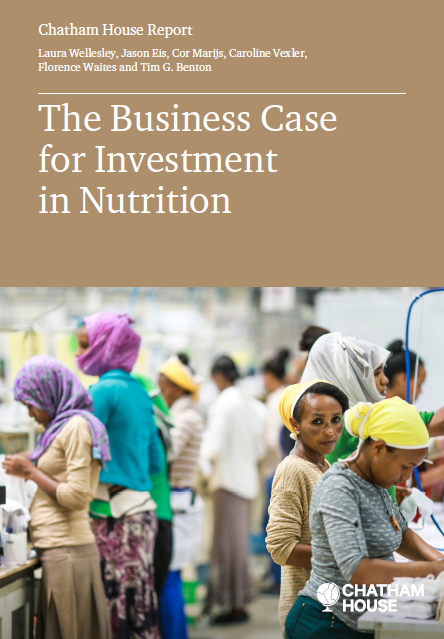Businesses have a vital role to play in improving nutrition, both in the workforce and in the community. Effective action could reduce global deaths from malnutrition and greatly enhance economic productivity.
Malnutrition acts as a brake on the development of individuals, communities and economies around the world. Encompassing both undernutrition (which results in conditions such as stunting and anaemia) and overnutrition (e.g. overweight and obesity), malnutrition is the leading cause of death globally, and the leading driver of disability. Malnutrition experienced in childhood has lifelong impacts on cognitive and physical development, as well as on earning potential. It is an intergenerational problem that traps households and communities in a cycle of poverty. Yet progress on tackling malnutrition is stalling. There is chronic underinvestment in potential solutions, while the challenge is becoming more complex.
Previous research has looked at the impacts of poor nutrition on health systems or society at large, but the effects on businesses have gone largely unexplored. This report is the first of its kind to reveal the hidden costs of malnutrition for business, and the extent to which these costs are recognized and addressed by multinational companies (MNCs). It finds that businesses in ‘low- and middle-income’ countries collectively lose between $130 billion and $850 billion a year through malnutrition-related productivity reductions, equivalent to between 0.4 per cent and 2.9 per cent of those economies’ combined GDP.
In reality, the costs are likely to be much higher. The model developed by Vivid Economics4 for this report looks only at the direct costs of certain forms of malnutrition in the adult workforce in terms of reduced productivity. It does not explore the costs of impaired cognitive development and low educational attainment resulting from undernutrition in childhood, or indirect costs such as paid sick leave for malnutritionrelated illness. The study therefore estimates only a share of the total costs, yet still finds that these are in the hundreds of billions of dollars each year.
Despite these substantial impacts, companies routinely overlook or underestimate the cost of malnutrition to their operations and are failing to spot the opportunities to drive action to improve diets and related health outcomes.
Download the full report.
